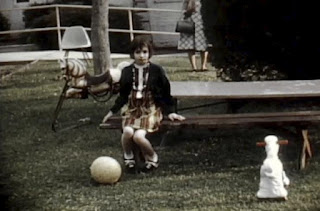Rule of Thirds!
Rule of Thirds!
Ever noticed there has been one setting in your DSLR or Mobile Camera to turn the Grid Lines on ?
You might not be knowing the reason why it's there and you could be turning/keeping it off everytime you come across it!
But it's there for a reason and that's exactly what I want to tell you about. There is a rule called 'Rule of Thirds' in the fields of photography :
It simply states that the main subject (or the subject in focus most of the times!) of your photograph should be aligned with the guide lines and/or four intersections!
But why ? You are a good questioner!
Because it just helps you improve the composition of your photo. In plain words, it makes your photo look better!
Have a look..
- Before :
- After :
In case of portraits, one of the eyes or the nose line could be taken care of :
But this could be violated to make more use of lines like this, which is not off the center :
This is as good as the Golden Ratio and this is more of a psychological fact if we consider just the visuals.
But this is not a standard trick to make every photo look good. Even professionals take the liberty of breaking it more often. But they always have this in their mind. Just a good tip for the beginners :)
A symmetry is always going to break it :
So give this rule a try next time you click a photo.
And if you miss it, you can always do it while cropping the photo. You might have noticed that all the editing apps offer grid lines while cropping, for the same reason :)
But break it, too. Not a strict rule at all ;)
Rule of Horizon Line!
There is one more use of grid lines which I didn't mention earlier just to keep it simple!
These lines are also used as a reference to keep horizons and vertical lines straight. Here is an example of one of my own photos :
Before :
After :
But according to your perspective and angle, either of horizontal and vertical lines could be not straight. Like minars in these photos.
Additionally, align the horizon line with any of the guide line like this :
Before :
After :
Both these rules are good to be followed when you are shooting, but this can always be corrected in post-processing/editing.
Hope this helps you a little. Happy Shooting :)
Photo Source : Digital Photography Review & Google


Comments
Post a Comment